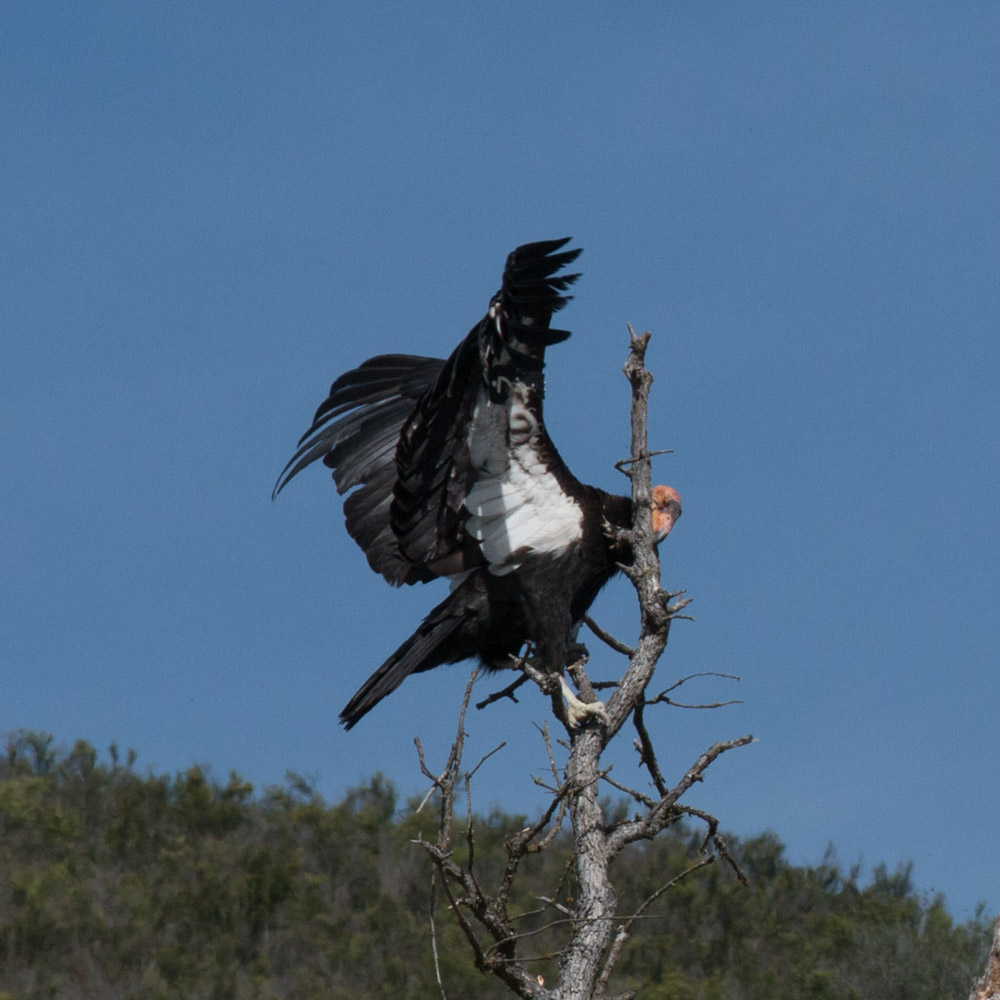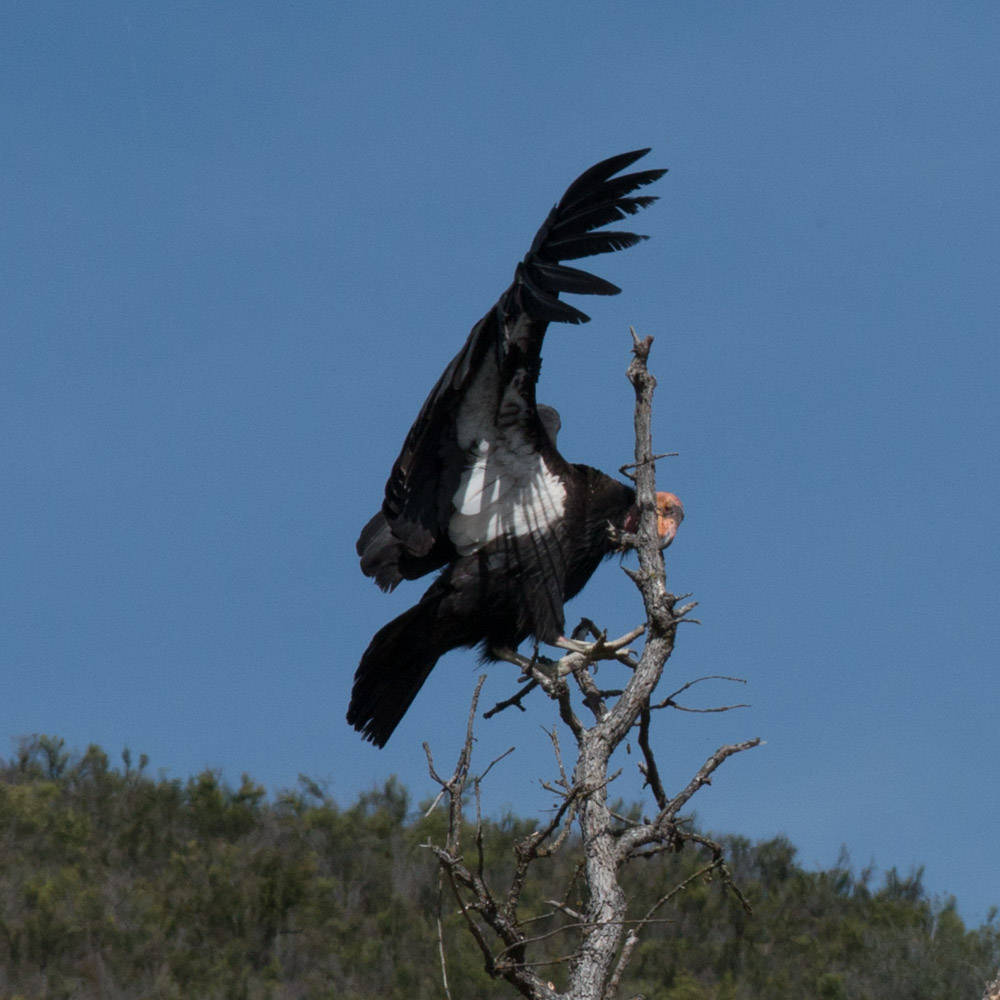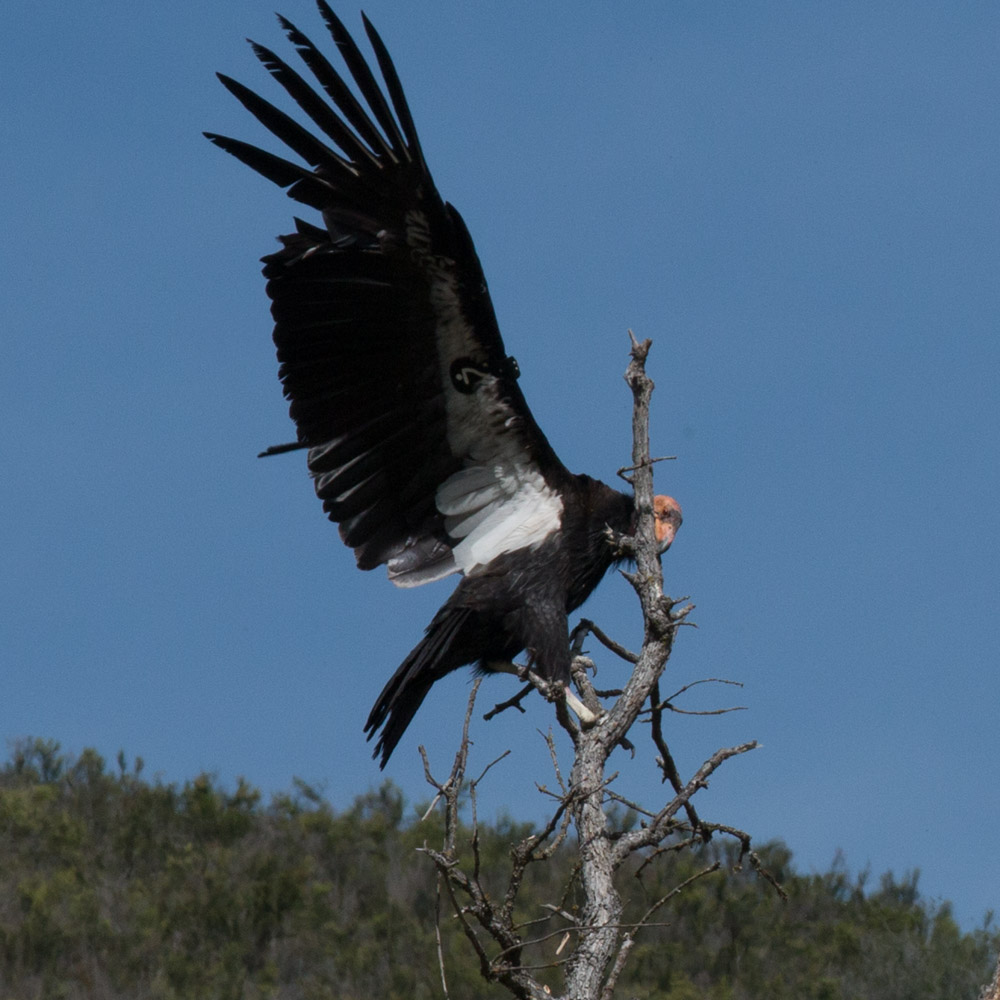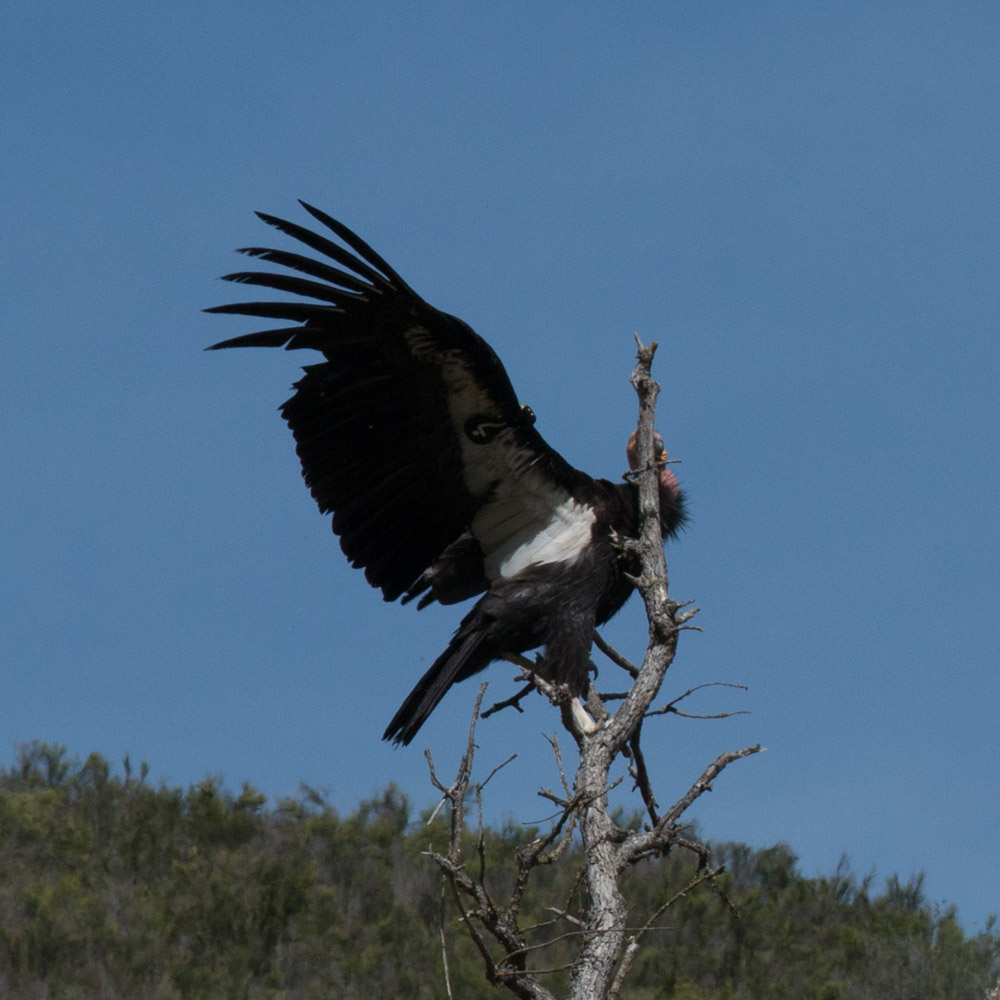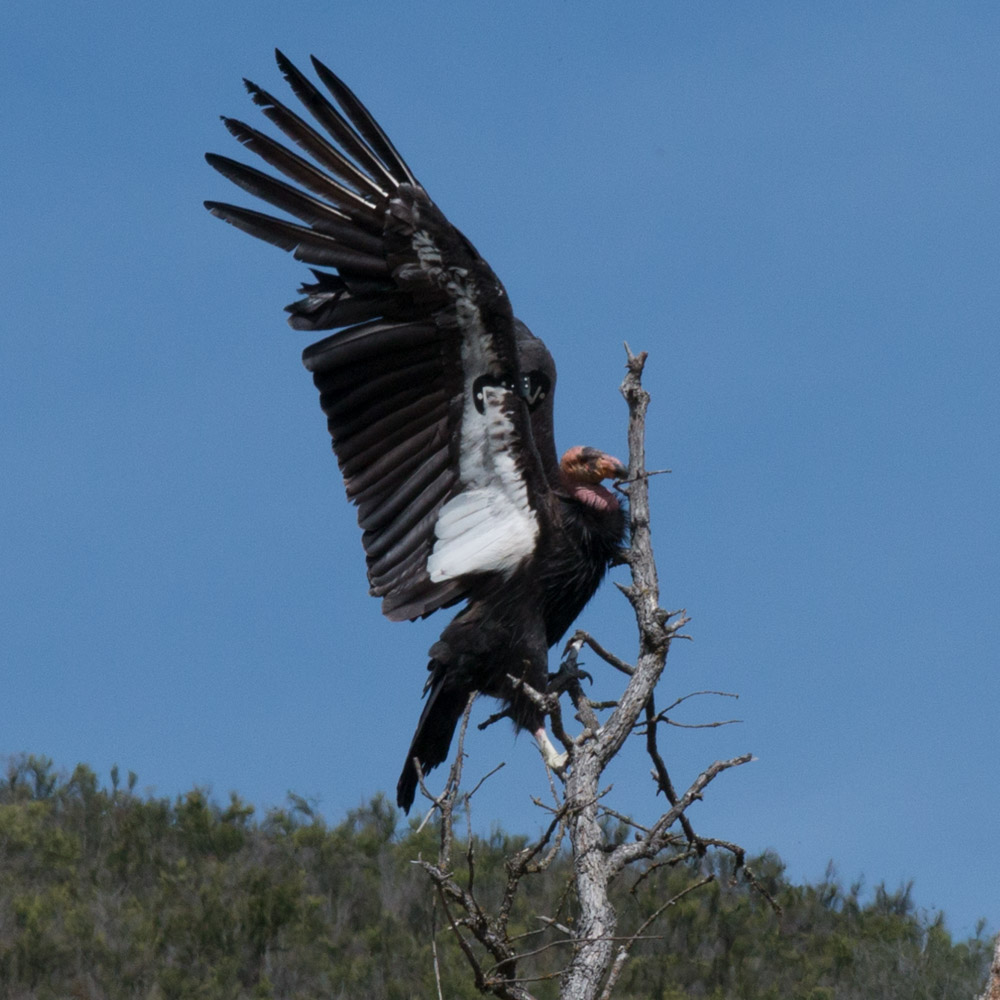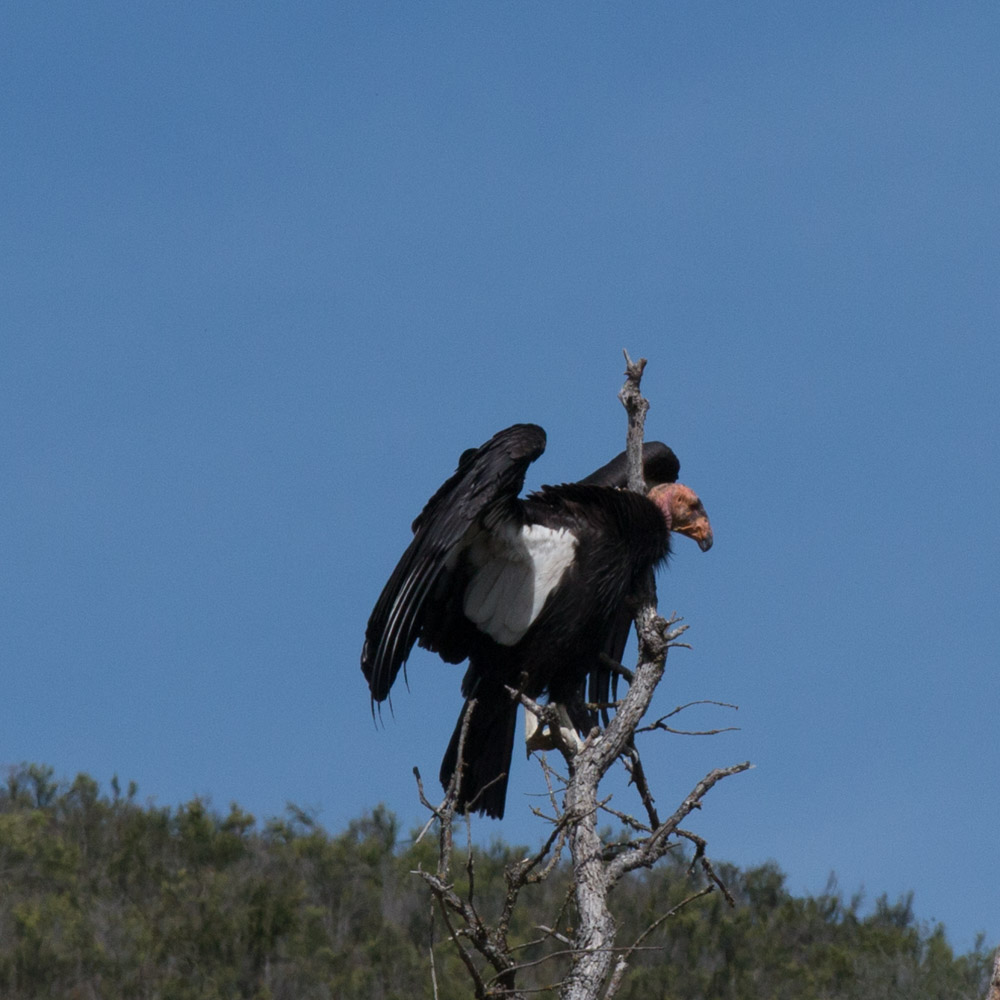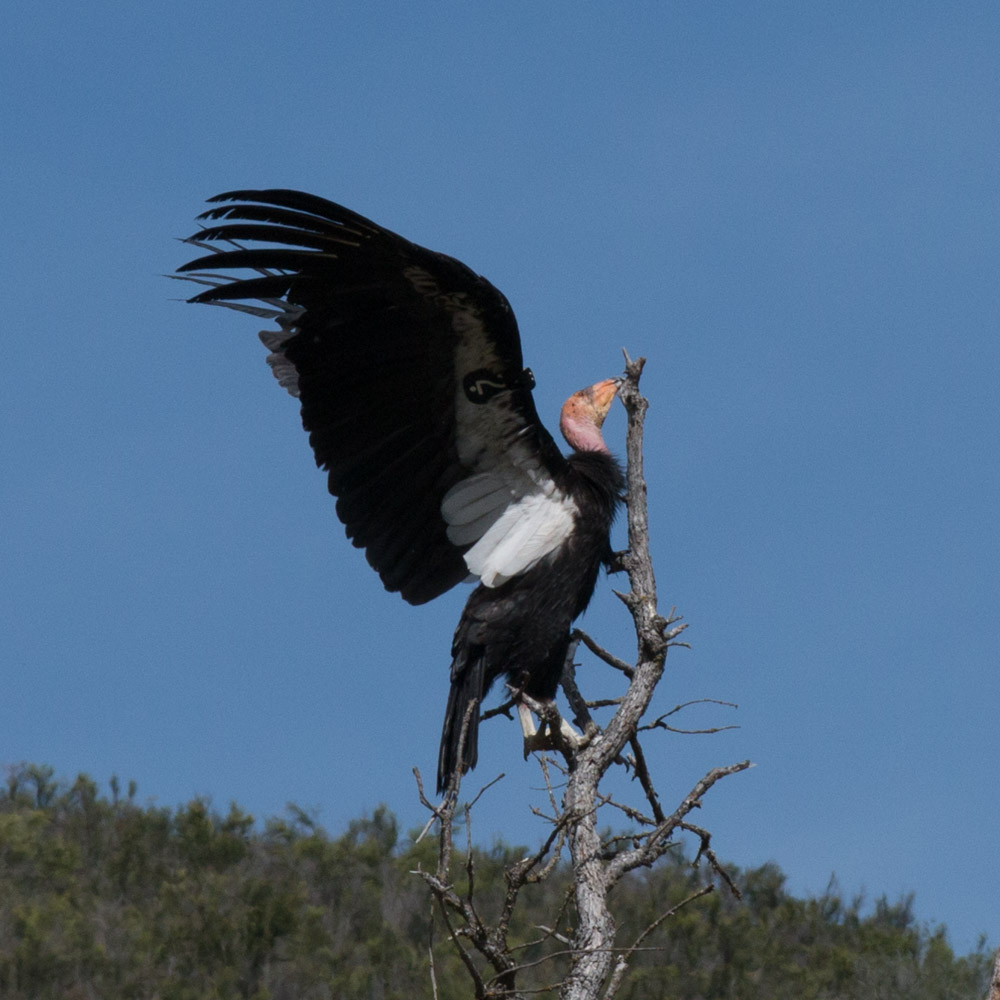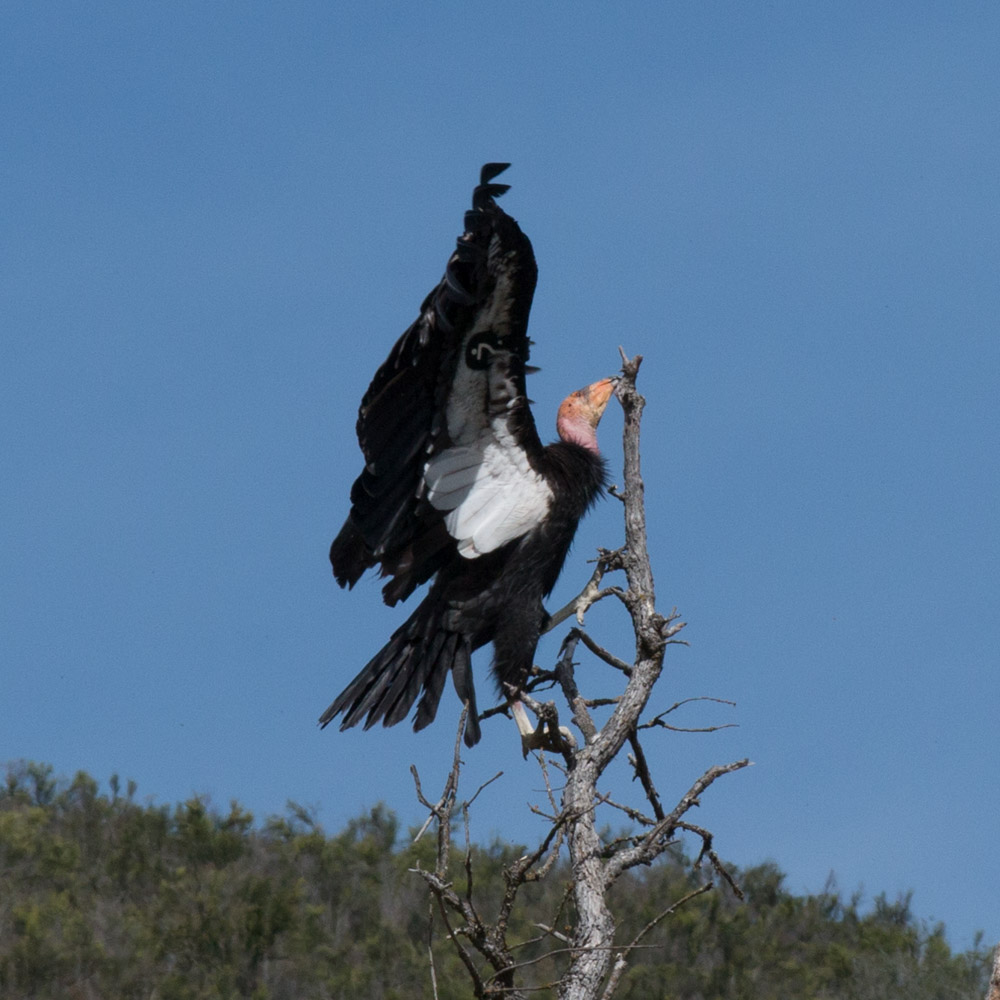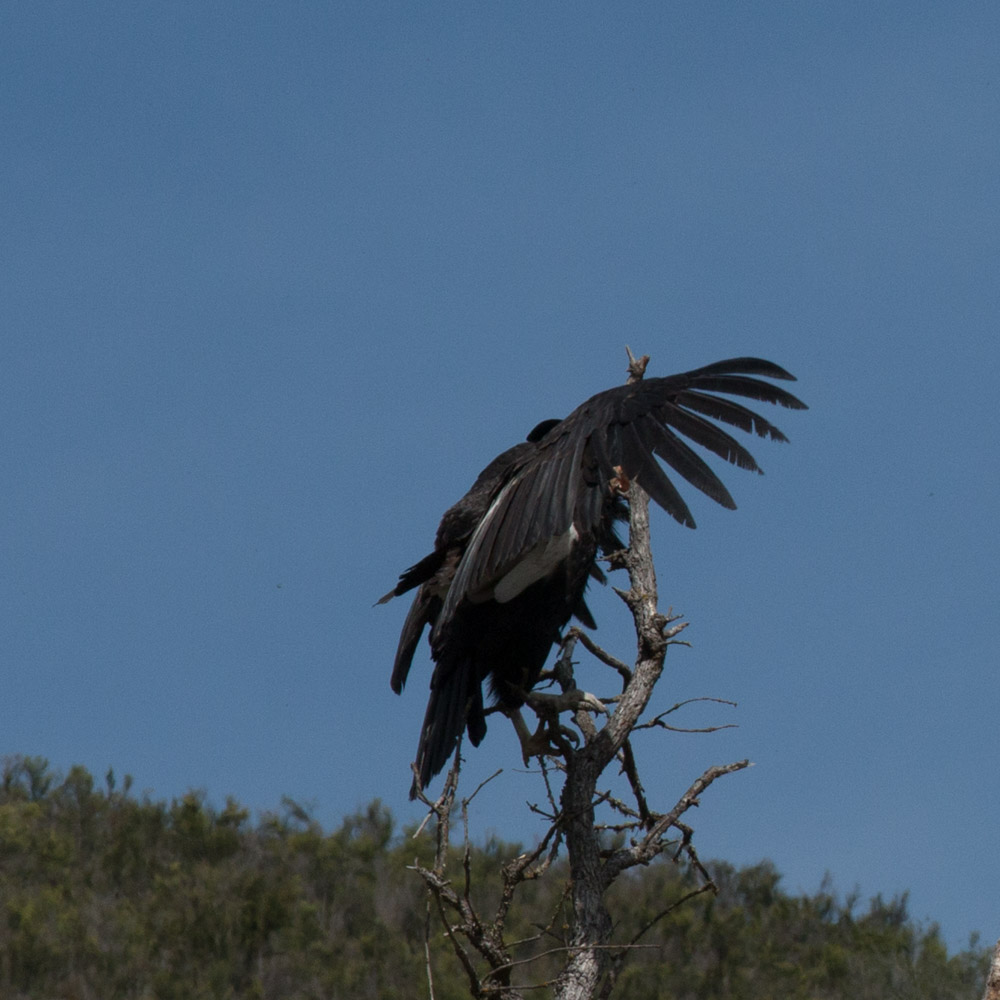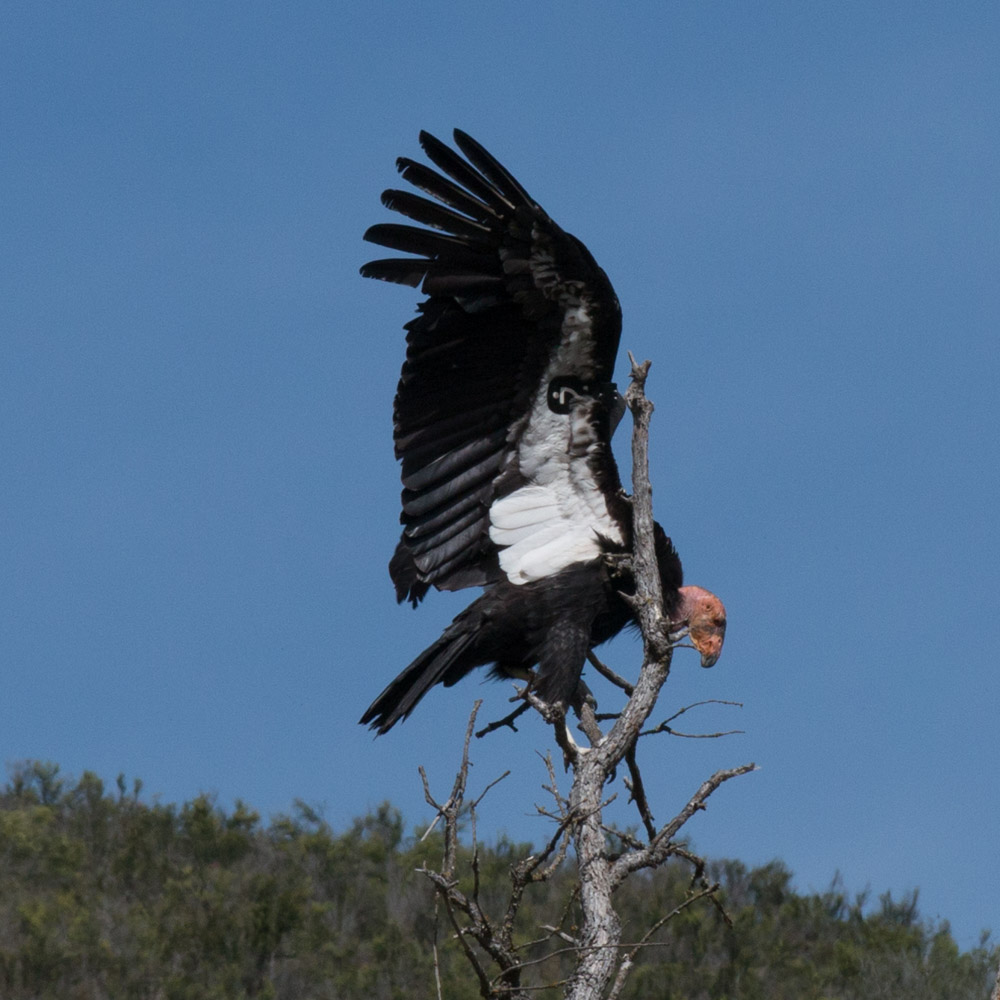From behind the wire
On April 19, 1987 the last remaining wild condor was captured and removed from the wild. There were 22 condors still alive. Twenty-two. Behind the wire. The last passenger pigeon and the last Carolina parakeet died behind the wire. It looked like the California condor might suffer the same fate: an ignominious end to a species.
Fast forward to December 2015.
There are 435 California condors alive as of December 31, 2015. That's almost 20 times the population size in 1987. And 268 of those birds were in the wild, outside the wire. In California, there are 155 individual condors in the wild. If you travel to the wilds of central California you stand a chance of actually seeing one or more, outside the wire.
March 2016, found us on the road to Pinnacles National Park. We knew we would be in the heart of condor habitat, but would we see any? The first stop in almost any National Park Service unit is the fee booth, where we asked: "Seen any condors?" "They've been roosting in the evenings on top of that ridge above the campground." Cool. That evening we looked up at the ridge and saw a flock of large dark birds soaring on the currents. We're not sure how to describe seeing the wild condors flying about ½ mile away. They certainly were not attractive with their puffy, swollen red heads (adults), but they were nonetheless impressive in size, soaring on the thermals with their two flat, surfboard wings, decorated at the ends with long “fingertips”. Nearly twice the size of the turkey vultures they hung with; helping us comprehend the scale of these gigantic birds with their 8.5 – 9.5 foot wingspans.
We saw two more soaring high over the Park the next day as we hiked the peaks. We also encountered a biologist from the Pinnacles condor crew monitoring some of the individual condors' radio transmitters. We had a nice conversation with the man and we noticed other hikers also engaged him in conversation. The biologist was a good ambassador for the condor recovery program. He and his co-workers have much to be proud of. The recovery program is a triumph of wildlife management.
The next morning we were fortunate to see nine condors up close when they landed in trees a couple hundred feet beyond the campground. The first time they’d landed there according to members of the condor monitoring team who were also watching.
Later as we drove off we tried to settle on a word to describe the condors.
Playful - we watched their antics for over an hour while they warmed up in the morning sun.
Curious – which gets them into trouble picking up tin, lead bullets and other indigestible and poisonous human trash.
Social – picking at each other, pushing and pestering younger condors (with black heads) off the tree, and interacting in ways we could not interpret.
Clumsy - using their chicken-like feet, wings, and beaks to help climb the branches.
Ponderous - considerable effort to flap those oversized surf board wings to take off between protruding branches and other obstructions; a nine-foot prehistoric creature ascending directly overhead.
The best word to describe them –
Majestic -
... and outside the wire!

